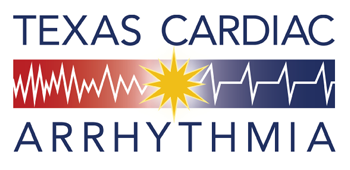Patient Education
Electrical SystemElectrical System
The pumping of the heart muscle generates a pulse, or heartbeat. The normal pattern of muscle contraction begins in the upper chambers (atria), which pump blood into the lower chambers (ventricles). The ventricles pump blood to the body and lungs. This coordinated action occurs because the heart is “wired” to send electrical signals that tell the chambers of the heart when to contract.
You may not be aware of your heartbeat most of the time. If you run up and down a flight of stairs or get frightened, you may notice the pulse in your neck or chest becomes strong and rapid. Your heartbeat is able to speed up and slow down because it is wired with electrical tissue, similar to the wires that connect a stereo. Your heart also has built-in “pacemakers” that are like electrical outlets. They send signals that tell the heart muscles to contract. Just as your arm muscles contract, or shorten, when you lift a weight, the heart muscle contracts with each heartbeat.
Without the electrical system, the heart would just sit there and not pump blood. The blood would not circulate and the body would not receive the oxygen and nutrients it needs. When blood flow stops to the brain, the person loses consciousness in seconds and death follows within minutes.
The electrical system of the heart triggers the heartbeat. The pacemakers and the wiring that run through your heart also coordinate contractions in the upper chambers and lower chambers, which makes the heartbeat more powerful so it can do its job effectively.
How Is The Heart Wired?
You likely have heard of or know someone with an electronic pacemaker or other implantable device to regulate the beat of the heart. The most famous person recently to receive such a device is Vice President Cheney. His device, called an implantable cardioverter defibrillator (ICD), has several functions. One is to send electrical signals to the heart to tell it to beat if the heart’s electrical system fails.
We normally have our own pacemakers that tell the heart when to beat. The master pacemaker is located in the atrium (upper chamber). It acts like a spark plug that fires in a regular, rhythmic pattern to regulate the heart’s rhythm. This “spark plug” is called the sinoatrial (SA), or sinus node. It sends signals to the rest of the heart so the muscles will contract. First, the atrium contracts. Like a pebble dropped into a pool of water, the electrical signal from the sinus node spreads through the atria.
Next, the electrical signal travels to the area that connects the atria with the ventricles. This electrical connection is critical. Without it, the signal would never reach the ventricles, the major pumping chambers of the heart. The first structure it reaches is another natural pacemaker called the atrioventricular (AV node). A structure called the bundle of His emerges from the AV node and divides into thin, wire-like structures called bundle branches that extend into the right and left ventricles. The electrical signal travels down the bundle branches to thin filaments known as Purkinje fibers. These fibers distribute the electrical impulse to the muscles of the ventricles, causing them to contract and pump blood into the arteries.




